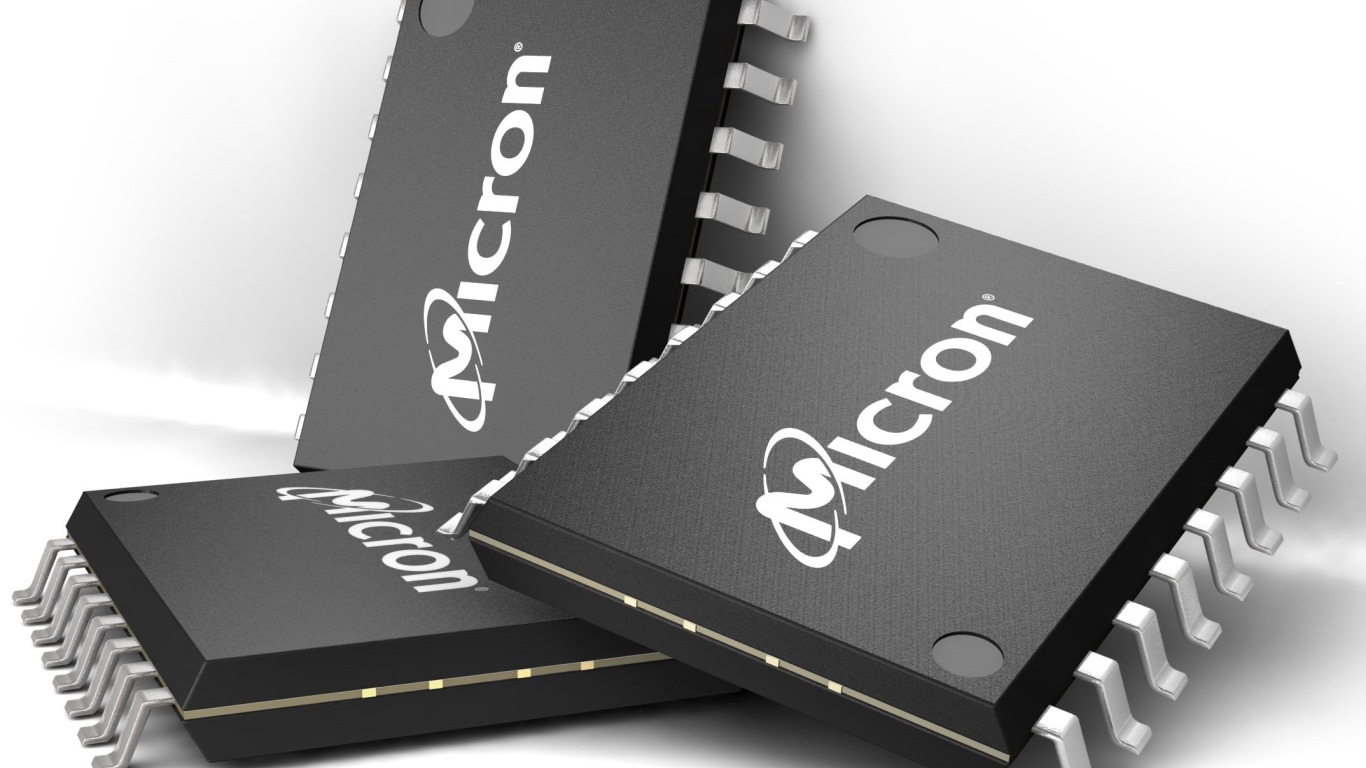Technology
What Will It Take for Micron Stock Gains to Continue?

Published:
Last Updated:

Last year was a good one for semiconductor stocks. Stock prices of six of the country’s largest chipmakers performed better than the S&P 500’s gain of 29%. Among those top performers, shares of Micron Technology Inc. (NASDAQ: MU) rose by 67% in 2019.
That was just behind Nvidia Corp. (NASDAQ: NVDA), which gained nearly 75%. Both trailed a block-busting 155% gain in Advanced Micro Devices Inc. (NASDAQ: AMD). Even the chip industry’s biggest company, Intel Corp. (NASDAQ: INTC) rose more than the S&P 500, up about 30.5% for the year. Texas Instruments Inc. (NASDAQ: TXN) added 41.5% in 2019 and Qualcomm Inc. (NASDAQ: QCOM) rose just shy of 60%.
The benchmark Philadelphia Stock Exchange (PHLX) Semiconductor Index rose 60% last year. A very good year indeed. But what about 2020?
This year has some positives and some negatives. The good news is that demand will continue to be driven by manufacturers focused on putting intelligence into every imaginable device. Artificial intelligence (AI), machine learning and self-driving vehicles remain hot areas for development. All require processing power and memory chips. That last is where Micron enters the picture.
The less-good news is revenues and profits were constrained last year, and it’s not clear that the situation will improve this year. For Micron, its DRAM and NAND flash memory products.
DRAM (dynamic random access memory) chips are used in varying amounts in virtually every desktop PC, laptop and server. NAND flash memory is used in smaller devices, like thumb drives, cameras and smartphones, where its large storage capacity and ability to write and erase data quickly is a significant benefit. Solid-state drives are also big consumers of NAND flash.
In the high-tech world, memory chips are about as close as you can get to a commodity. There’s essentially no difference among memory chips built by Samsung, SK Hynix and Micron. Availability and price drive the business.
While DRAM memory lasts only as long as a device is powered on, NAND flash retains data in the same way that a hard drive does. Flash is cheap and reasonably fast, while DRAM is too expensive to use as a replacement for hard drive storage.
In 2015, a joint venture between Micron and Intel introduced a new type of flash memory called 3D XPoint. The companies claim it is about 1,000 times faster than the flash memory that underpinned the iPhone and could store about 10 times more data than the DRAM memory in PCs, laptops and servers at a lower price than either. The companies marketed the chips under the Optane brand. For cloud server providers like Google, Amazon and Microsoft, these storage devices are almost guaranteed to be a big hit.
Micron bought out Intel’s share of the joint venture early last year and introduced its own solid-state drive, the X100 SSD, in October. Like Intel’s Optane devices, these chips are aimed at the server market.
Even though memory demand is high, supply has been able to more than keep up, and that resulted in a decline in memory prices, especially for DRAM chips, in the second half of 2018 and the first half of 2019. DRAM pricing began to recover in December, but it is expected to remain oversupplied until mid-2020. Micron has guided current quarter selling prices down by a high-single-digit percentage.
CEO Sanjay Mehrotra attributes the decline to seasonal weakness and has said that pricing will improve this year because supply growth has declined as chipmakers have cut capital spending on new equipment while demand remains strong. Mehrotra went so far as to say the supply-demand balance for this will be a “tailwind” for makers of memory chips.
Although the final numbers aren’t in yet, the Semiconductor Industry Association in December estimated that semiconductor sales would fall by around 12.5% last year. In 2018, buyers were worried about the effect of tariffs on the availability of memory chips.
That drove demand and prices higher. As the effects became clearer, demand slowed and prices fell. Now inventories have cleared up most of the overhang and buying is expected to return, pushed further ahead due to demand from AI, machine learning and autonomous vehicles.
Micron’s fiscal second quarter ends this month, and expectations are low, due both to seasonality and to remaining supply overhang. The consensus estimate calls for earnings per share (EPS) of $0.37 on sales of $4.71 billion. For the full fiscal year (ending in August), Wall Street is looking for EPS of $2.27 and sales of $20.48 billion. Both estimates are lower than fiscal 2019 EPS of $6.35 and sales of $23.41 billion.
Since the beginning of the year, nine analyst firms have reiterated their Buy ratings on Micron Technology stock, raised their price targets or done both. The consensus price target on the stock is $66.64. At last Friday’s closing price of $53.09, the implied upside on the stock is just over 25%. Micron was one of 10 stocks that scored major analyst upgrades early this year.
Looking out to the 2021 fiscal year, analysts expect EPS to double to around $5.50 and to rise in 2022 to about $7.70.
What all this indicates is that, even given intense competition from two larger competitors, Micron can hold its own in the memory market, even though gross margins have dipped from nearly 60% in November 2018 to 36% this past November. There are few naysayers, as short interest in the stock is a mere 2.4% of the float.
Thank you for reading! Have some feedback for us?
Contact the 24/7 Wall St. editorial team.